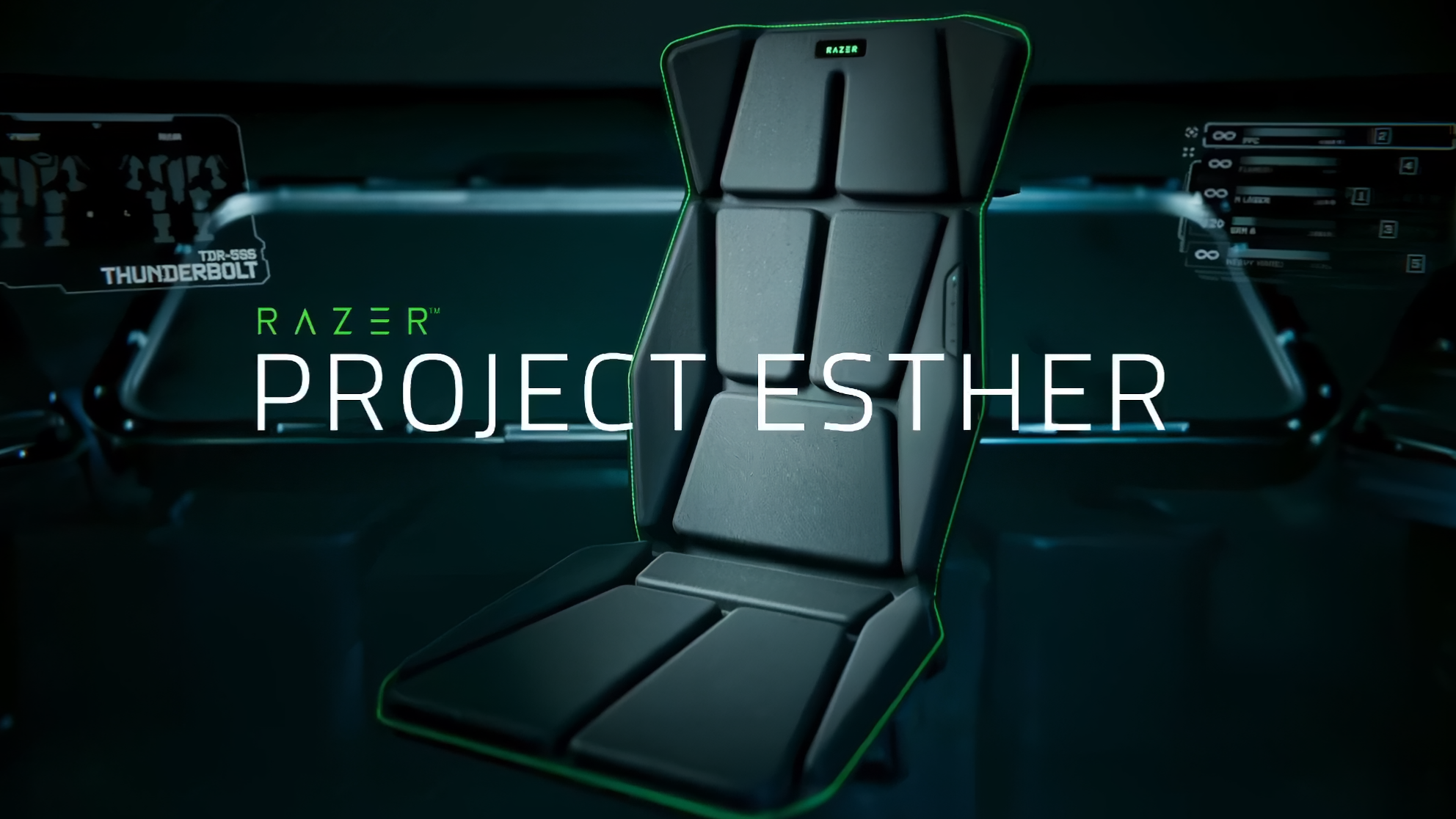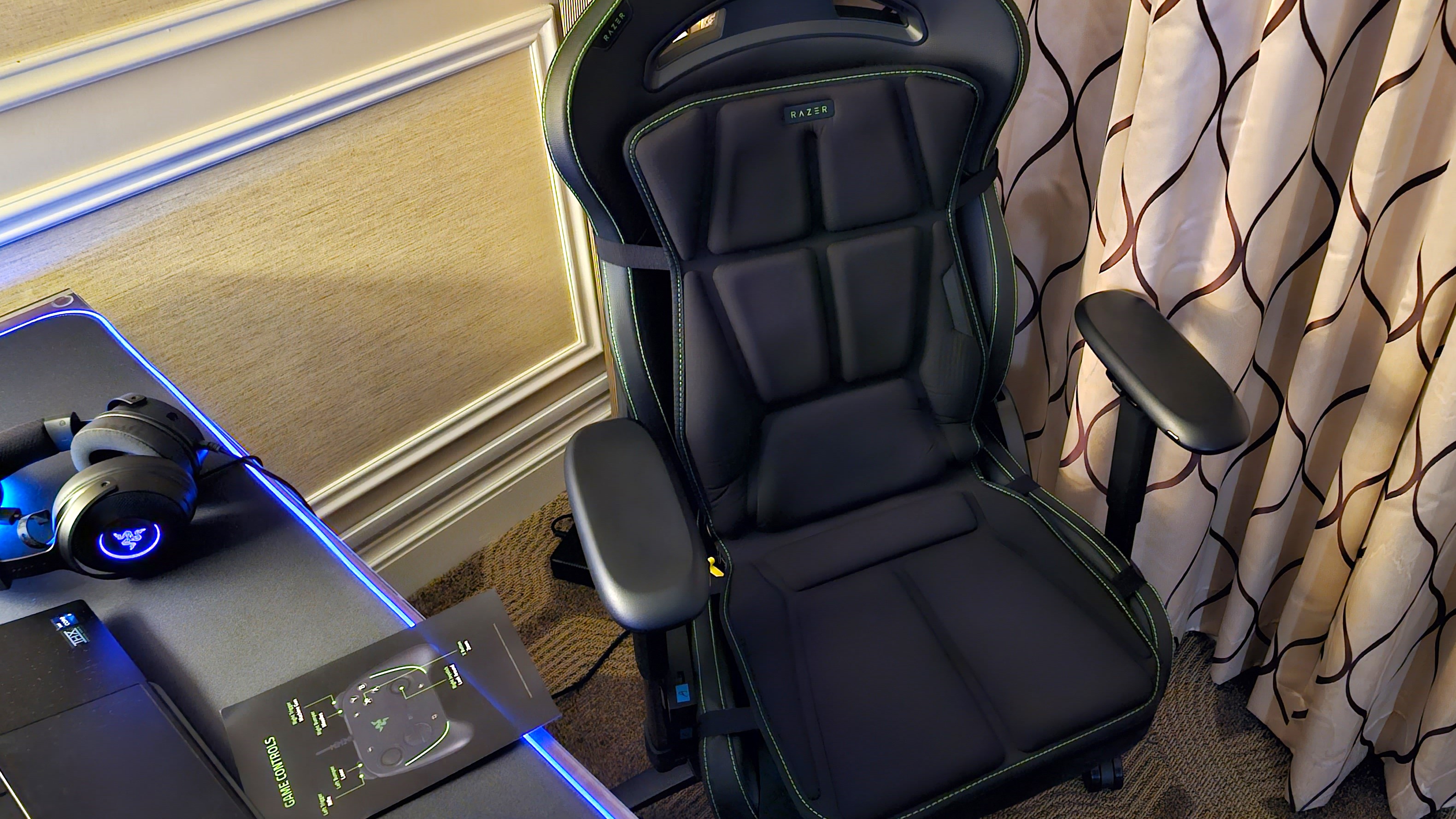
There is no shortage of interesting new technology being unveiled at CES 2024, ranging from the undeniably impressive to the undeniably impractical. Major PC peripheral manufacturer Razer is showing off plenty at CES this year, including Project Esther, an electronic cushion leveraging HD haptic feedback technology dubbed "Razer Sensa".
Our team are hitting the booths of CES and Tom's Hardware managing editor Matt Safford brings us a his hands-on impression of Project Esther.

"Experiencing Project Esther was one of the more interesting demos of CES so far, if perhaps not the most exciting or impactful. In a demo where I was a piloting a battle mech on rails, being shot at by various enemies, the haptics in the chair mat and the headset cascaded around my legs, back and head. Feeling an impact move up and around me was a new and truly unique experience. And I give Razer credit for not dialing the haptics up (if indeed that's even possible with the tech here) to a level that felt like the experience felt like it was trying to impress with shock value.
I also like that, at least at this stage, Razer had built it into a chair mat, rather then expecting anyone interested to shell out for a new and presumably very expensive chair. Having said that, there's no denying the fact that a mat full of electronics makes for a less comfortable long-term sitting experience. And having to have a cable plugged into your chair is far from ideal for several reasons that should be obvious to anyone who has children, pets, or just anyone who's ever tripped over their laptop power cable. Hopefully if Razer takes this concept further, they'll move to some kind of break-away magnetic connector to at least lessen this potential danger and make it easier to plug and unplug the mat when you aren't actively using it.
It will also be interesting to see what game developers do with the SDK, and how much adoption it gets, given this is, for now at least, a concept device. In particular, I'd love to see what quirky or even therapeutic experiences indie game developers could create around Project Esther. Because while feeling the impact of rail gun or a pulse rifle strafe across your body is indeed interesting, it feels like haptics this complex could be put to more interesting use than stamping it onto tired video game tropes."
As noted by Safford in his impressions above, Project Esther offers a uniquely immersive experience but doesn't necessarily prioritize comfort despite being a cushion. The CES demo is also using a wired setup despite Esther's official page touting Razer's "Hyperspeed Wireless" technology, known for use in wireless mice like the Basilisk V3 Pro.
Reportedly, the haptics were "around 44 Hz" and akin to cat purring, which means this falls closer to "massage" than "the shirt that stabs you" on the HD haptics scale.
With any luck, a properly wireless Project Esther will get its fair shot on the market and have more than a few developers come out to support Razer Sensa. Maybe some particularly determined gamers will mod it into games themselves, a la DLSS and FSR mods?
In any case, we're inclined to agree with the notion that haptics like this could be put to very interesting use by indie game developers. Feeling the swaying motion of the ocean while swimming underwater in games like Abzû, for example, would be very immersive.







